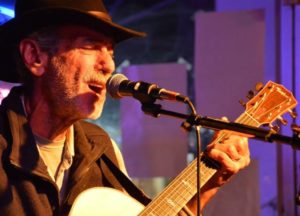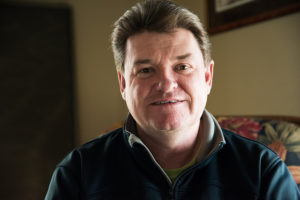What are These Things We Call Seasons?

What are these things we call seasons? Is it winter as I shelter in my car looking out over wind-scoured stubble, listening to the wind-chime soprano tinkling of a horned lark on a day that would kill me in a matter of hours? How can this feather-puff be in full song? Could fall begin with July 1st’s first lesser yellowlegs and solitary sandpipers back in Knox County from the tundra and tropics-bound? Is it spring when the first hopeful pools open on the great rivers and fill with common goldeneyes splashing, calling, mating, and flight-whistling through air too cold for me to breathe?
Ask robins. February’s first front says welcome back. Some say,”I never left.” Ask willow flycatchers. Late May, at the end of all the great passage, they deign to arrive. And in ten weeks will be gone again.
Peer closely at life’s equation. Its complexity is limited only by our lack of perception. Three hundred birds come now to my feeders. Each tells a different tale. I am a chickadee. I weigh one quarter of an ounce and I just spent the ten below zero night in your arbor vitae. Six feet away you slept under down with a net gain of eighty degrees. I am nuthatch, titmouse, woodpecker and I really don’t care what day it is. This is my home. I am starling, house sparrow, collared dove, pheasant, and I really don’t care what continent this is. It is now my home. I am mockingbird, Carolina wren, golden-crowned kinglet, yellow-rumped warbler and I can overwinter here. Until the winter comes that I can’t.
A chickadee forages frozen meat shards from the rib cage of a deer. A Carolina wren works sunflower seeds wishing for a finch bill. A brown creeper believes in bugs under the bark of a January tree trunk, then timidly creeps out onto the snow below woodpecker-hammered suet and gleans amber flakes of fuel with a most curious recipe.
Snow comes, warmth leaves, and the bird list grows. Thirty cowbirds materialize like fruit flies. Among them is a grackle whose other millions are two states south. Amid the juncos, who believe they are south, appear American tree sparrows who only come to me in time of need. My winter bluejays are here now. My summer bluejays are somewhere south of the grackle millions.
Minus ten. The lake is locked down and under four inches of snow. Even the spillway and outlet stream are frozen. But there huddled on a ground pipe staring motionless at an open trickle sits a kingfisher. A hungry optimist, table for one, at a very small sushi bar.
January fourth I spent a couple of hours revisiting my Christmas Bird Count route. On December fifteenth this area hosted thirty thousand geese of five kinds. Today there are six. Six geese. Total. Of one kind in an unkind world.
We have a real winter on our hands. It is coming for our fingers. I sit and write about my back yard birds and wonder about my hiatus from my hobby. Aside from four days in the field for the Knox CBC I have not been out since late May. I have the time right now. I need a spark. Snowy owls may do the trick. They are scattered in many places in the northern half of Illinois right now. Pine siskins and red-breasted nuthatches are out in force with a smattering of common redpolls. I need to stoke my inner fire. I need to go outside.
by Mike Baum


